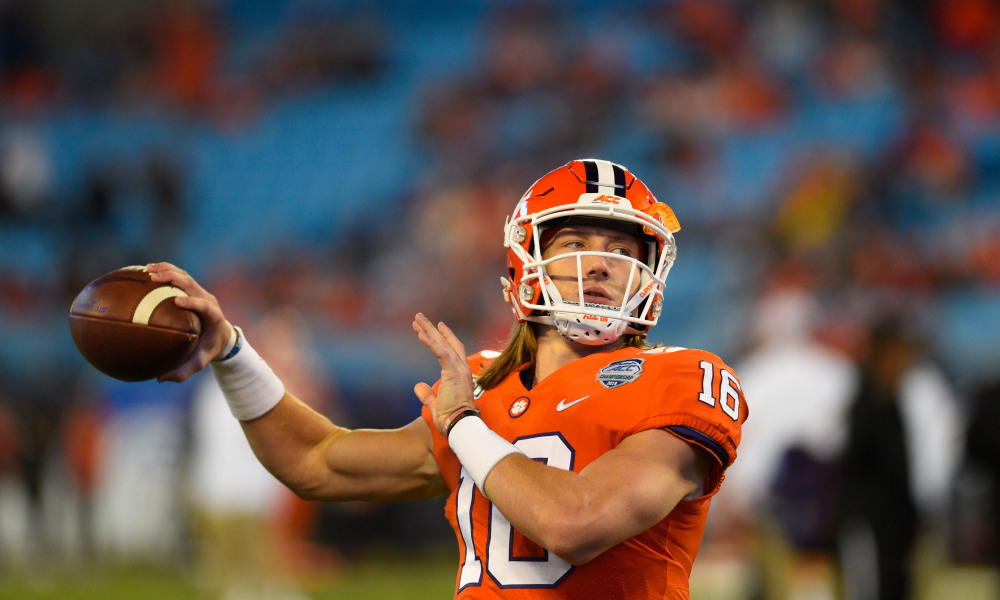So far this offseason, we have looked at every position group and broken down who we think are the top prospects, who we think are a little overrated and who has a chance to be great if they can make significant technical developments at the NFL level. However, the draft now just hours away, here is my final ranking for the top 32 prospects in the draft.
As a quick note before we start, these evaluations have been done from tape alone. I don’t have access to medical reports or background checks, and even if I did that is really beyond the scope of what I feel capable of assessing, so these rankings don’t take those things into account.
There are several prospects who are likely to be on other lists of this sort who won’t be on this list because I am not as high on them as others might be. However, one player who isn’t on this list who that isn’t necessarily the case for is Trey Lance. I don’t think Trey Lance is bad, I just think he is incredibly raw and that his appeal is not based on what he has shown as a quarterback on tape thus far, but rather what he might be able to become in the future. I think he has the highest ceiling of any prospect in the draft, but how likely he is to ever get to that point just isn’t something that can be assessed from tape, so he’s not included here.
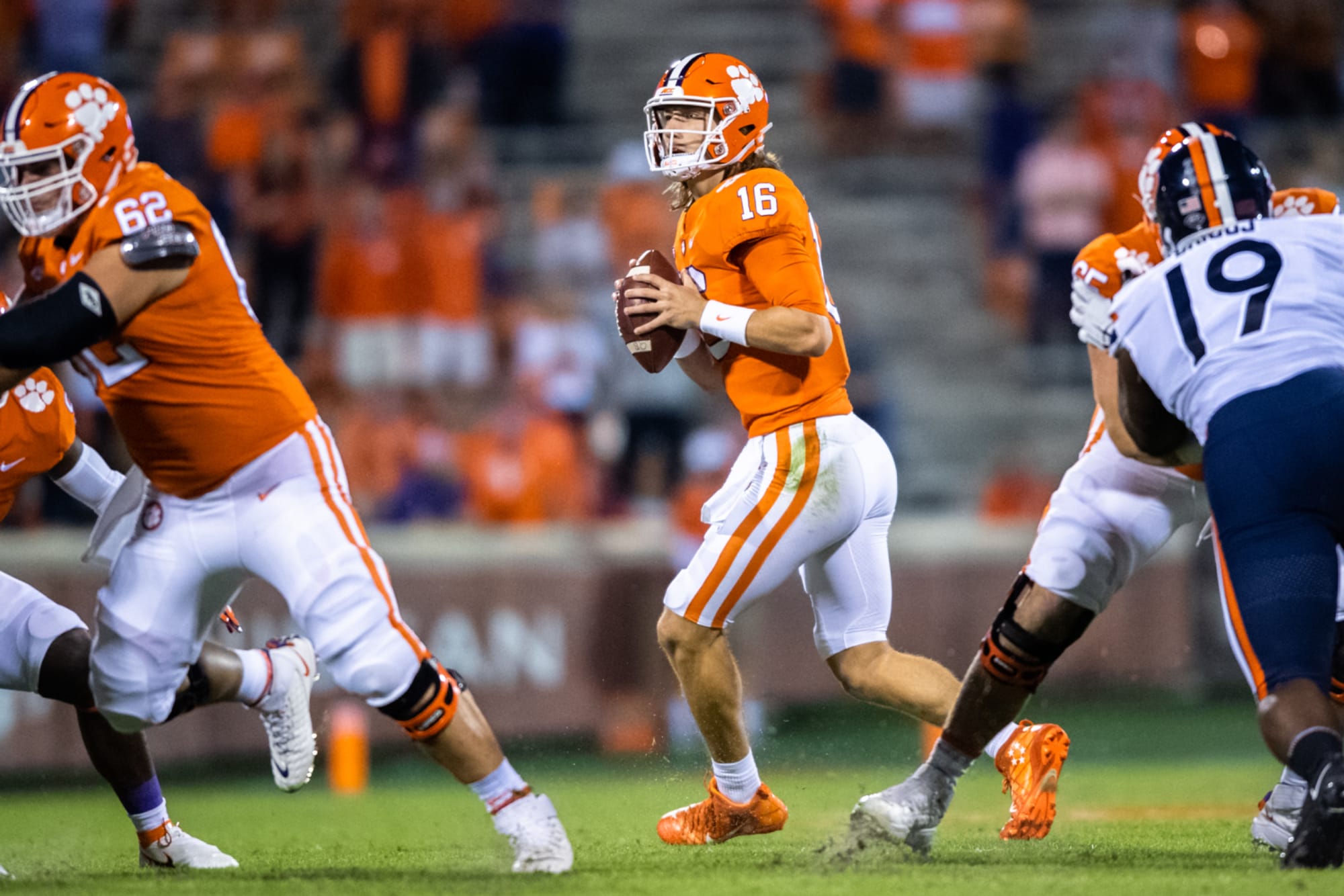
Photo Credit: Ken Ruinard-USA TODAY Sports
#1 Trevor Lawrence, QB (Clemson)
Lawrence might not be perfect, there are a few frustrating decisions on tape, and he will pushed far more in terms of processing in the NFL than he was in Clemson’s offense, but he has elite arm talent, makes good decisions with the ball on the whole and shows and ability to work through reads quickly. Every quarterback prospect is a risk, but Lawrence is probably the least risky prospect who also has the ceiling of being an elite franchise quarterback for several years. He might not become the best player, but it’s hard to make an argument that he isn’t the best combination of risk and reward.
#2 Rashod Bateman, WR (Minnesota)
For me, there are four skill position players who really stand above the rest, and the differences between them is likely more about style than substance, and Bateman is exactly what I think teams should value in a receiver. He has the speed to stretch the field vertically, has great hands and is a threat after the catch, but more importantly he is one of the best route runners to come out of college football in recent years with an ability to get off the line against press and create separation at all levels of the field.
#3 Devonta Smith, WR (Alabama)
There are those that are going to be scared away by Smith’s weight, and what has him below Bateman for me is that he can struggle when defenders are able to get a hand on him early. He does a great job of avoiding this through his route running, but this isn’t always possible. Other than that, Smith has great hands and is an excellent route runner with the ability to both stretch the field and also get open on a five-yard slant on fourth-and-3.
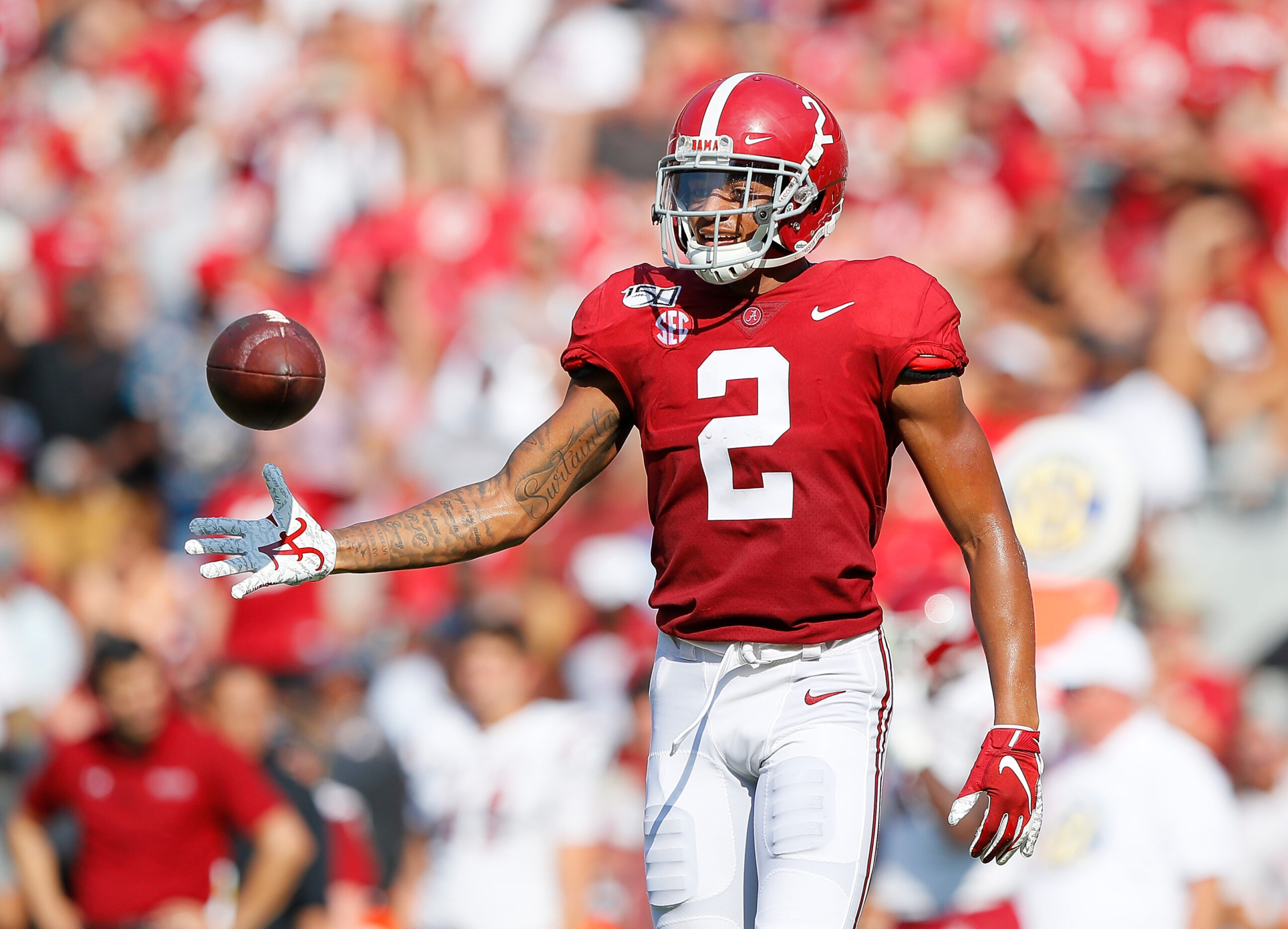
TUSCALOOSA, ALABAMA – SEPTEMBER 07: Patrick Surtain II #2 of the Alabama Crimson Tide reacts after intercepting a pass intended for Austin Shaw #13 of the New Mexico State Aggies at Bryant-Denny Stadium on September 07, 2019 in Tuscaloosa, Alabama. (Photo by Kevin C. Cox/Getty Images)
#4 Patrick Surtain, CB (Alabama)
Surtain is an excellent player, and the reason why that wasn’t always as evident when watching Alabama games was that teams were afraid to throw the ball anywhere near him. He has good movement skills and uses his hands well to redirect receivers early in plays to allow him to follow in man coverage, while also having the instincts and ball skills to be a really impactful player in zone. He might find that match ups against smaller, twitchier receivers aren’t his strength, but he can be an impact player from day one.
#5 Ja’Marr Chase, WR (LSU)
Ja’Marr Chase might well be the first receiver taken, and while he isn’t the top of my receiver board, he is an excellent player. He has the speed to threaten vertically, does an excellent job of using his physicality to create separation down the field and has great hands and ability after the catch. He does have room for further development as a route runner, especially on short and intermediate routes, and this is what drops him below Bateman and Smith for me, but he can be an elite receiver from day one.
#6 Justin Fields, QB (Ohio State)
There has been a lot of talk about Fields struggling to work through reads, and while there is some truth to the idea that he needs to be quicker and more consistent in this regard, he is not notably worse than some of the other top prospects and has more than enough positives on tape to rank him this highly. He has arguably the best arm in the class, is hyper mobile and does show some nice things in terms of processing. If he can put it all together in a more quick-passing scheme that counters his tendency to hold onto the ball, then he can be one of the best quarterbacks in the NFL.
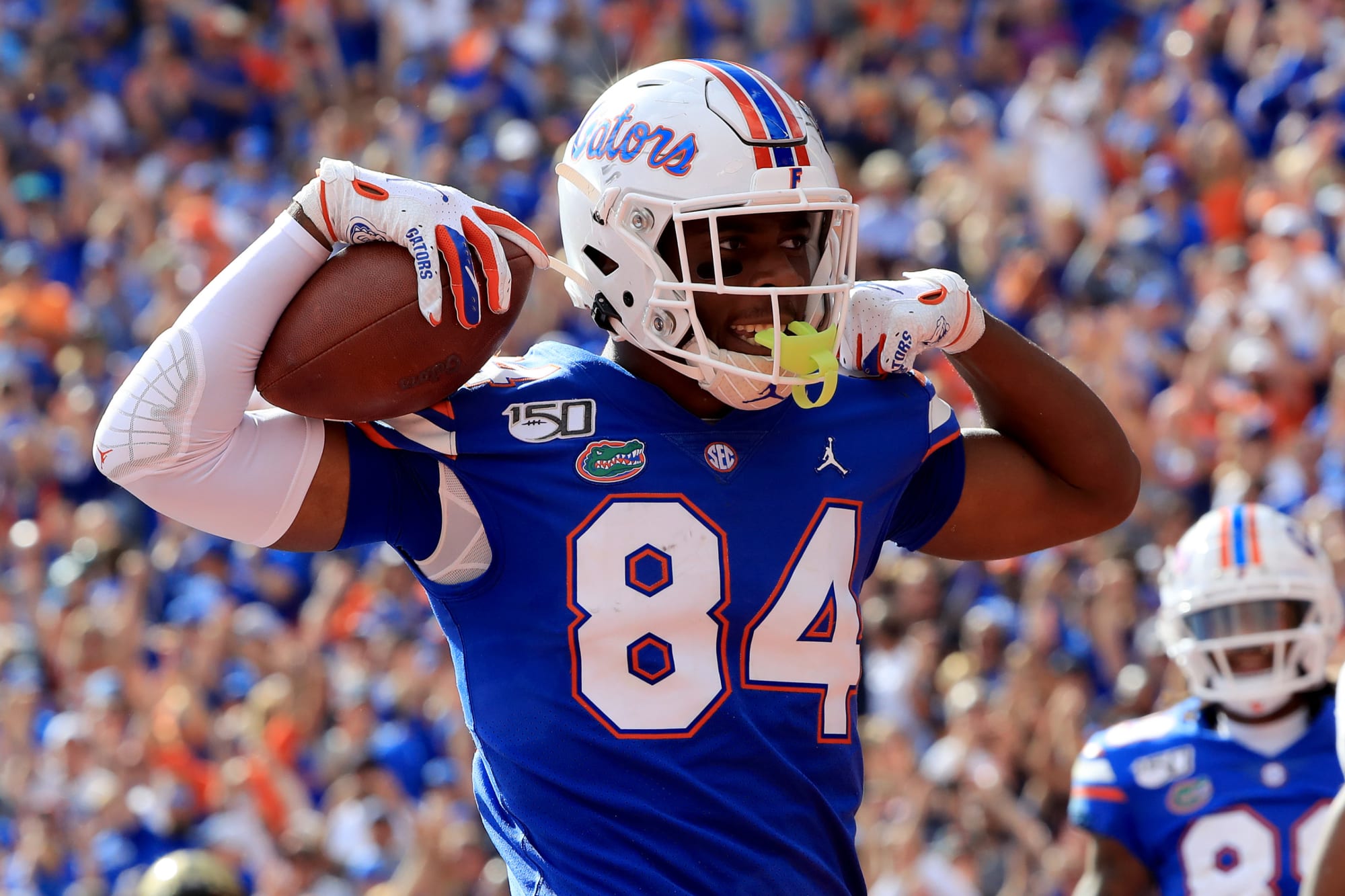
Sam Greenwood/Getty Images
#7 Kyle Pitts, TE (Florida)
Kyle Pitts is an exceptional athlete with great hands and flashes of suddenness as a route runner that teams are going to salivate over. He does need to improve technically as a blocker, especially in terms of his knee bend and base, but he doesn’t lack effort. He also has further room for growth as a route runner, especially on intermediate routes, but his ability to win reps at the catch point is highly valuable, especially in the red zone. Pitts is more likely to be a luxury rather than somebody who is the basis for an offense, but he can be a match-up nightmare for an NFL Offense to play with.
#8 Jaycee Horn, CB (South Carolina)
Horn is arguably the best man coverage player in the class, and while he can get a little grabby at the head of routes, he does a really good job of trailing receivers of all shapes and sizes around the field and in a scheme that plays a lot of man coverage he could be ranked higher. However, he has struggled to be as impactful in zone, and while he has flashes good ball skills, he needs to show more consistent anticipation to turn tackles into incompletions and incompletions into interceptions.
#9 Trevon Moehrig, S (TCU)
Trevon Moehrig isn’t the flashiest player on tape, he is unlikely to flatten people like Kam Chancellor or dive on an intermediate route like Ed Reed, but he is just consistently good at almost everything you could ask a safety to do. He is a good tackler; he plays well in both man and zone coverage with the ability to go man-to-man against tight ends and slot receivers or drop into centerfield and pick of passes on the back end. Similar to Antoine Winfield Jr. a year ago, there might not be one elite trait that stands out on film, but there an awful lot of very good.
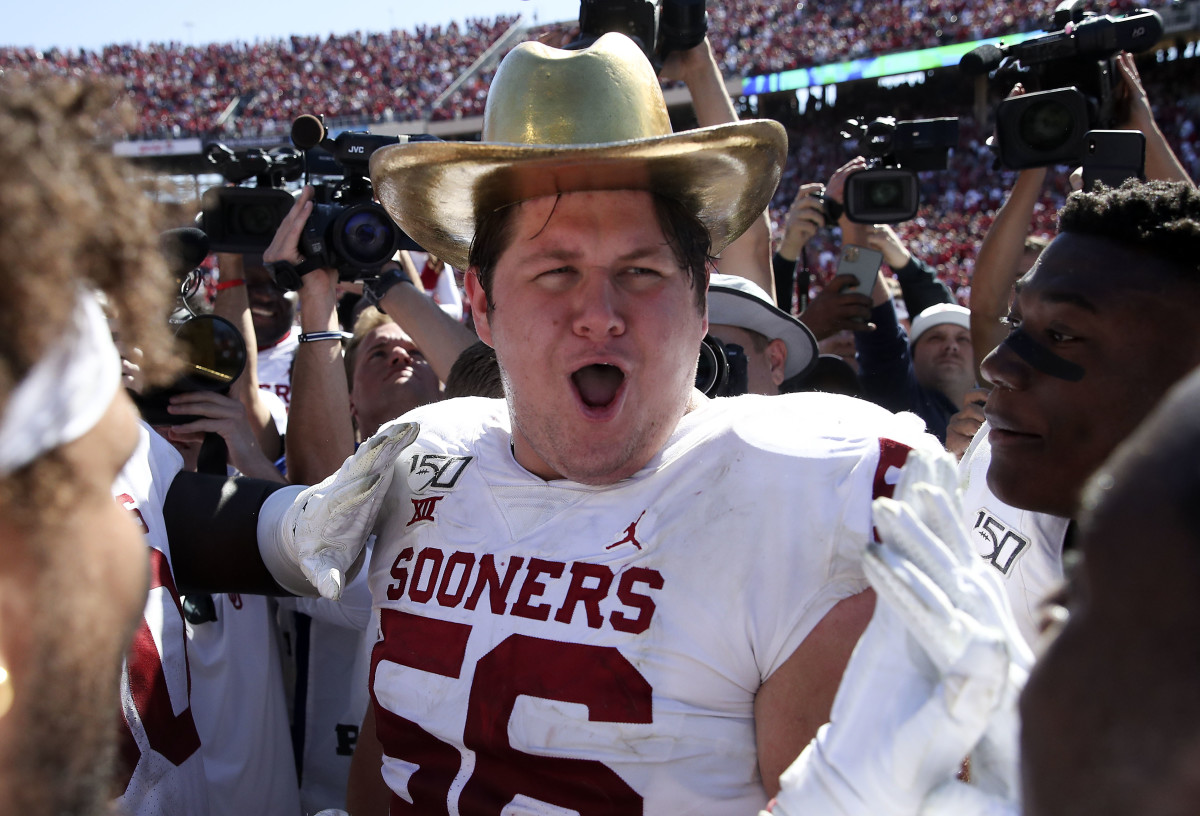
John E. Hoover
#10 Creed Humphrey, iOL (Oklahoma)
As much as this draft class has been talked about in terms of the depth at tackle, at the top of the class the strength more focused on the interior. Humphrey is a sneakily excellent athlete who is able to cover laterally in man coverage, get out in space on screens and as a pulling blocker and also be able to anchor against more powerful rushers. Technically, he plays with pretty good pad level, sets a good even base and uses his hands well to control blocks. Not a super flashy player, but a very good one.
#11 Kellen Mond, QB (Texas A&M)
Mond has a surprisingly good arm given how little hype he is getting, and while there are some frustrating misses on touch passes down the field there are also some excellent intermediate tight window throws. He makes generally good decisions with the ball and shows a nice ability to play with anticipation while working quickly through reads. He does need to show he can hit the deep ball more consistently, especially throwing outside the numbers, but with a high-quality surrounding cast he will be a very hard player to play against.
#12 Kadarius Toney, WR (Florida)
Toney is an interesting prospect, as he doesn’t have the elite top-end speed to consistently win over the top at the NFL level but has elite quickness and agility to create separation on intermediate routes and which also makes him a nightmare after the catch. He is also an excellent catcher of the ball and would excel in a role similar to that which Curtis Samuel played in the Panthers’ offense in 2020 where he is able to be a security blanket from the slot with the after-the-catch ability to turn short receptions into big gains.
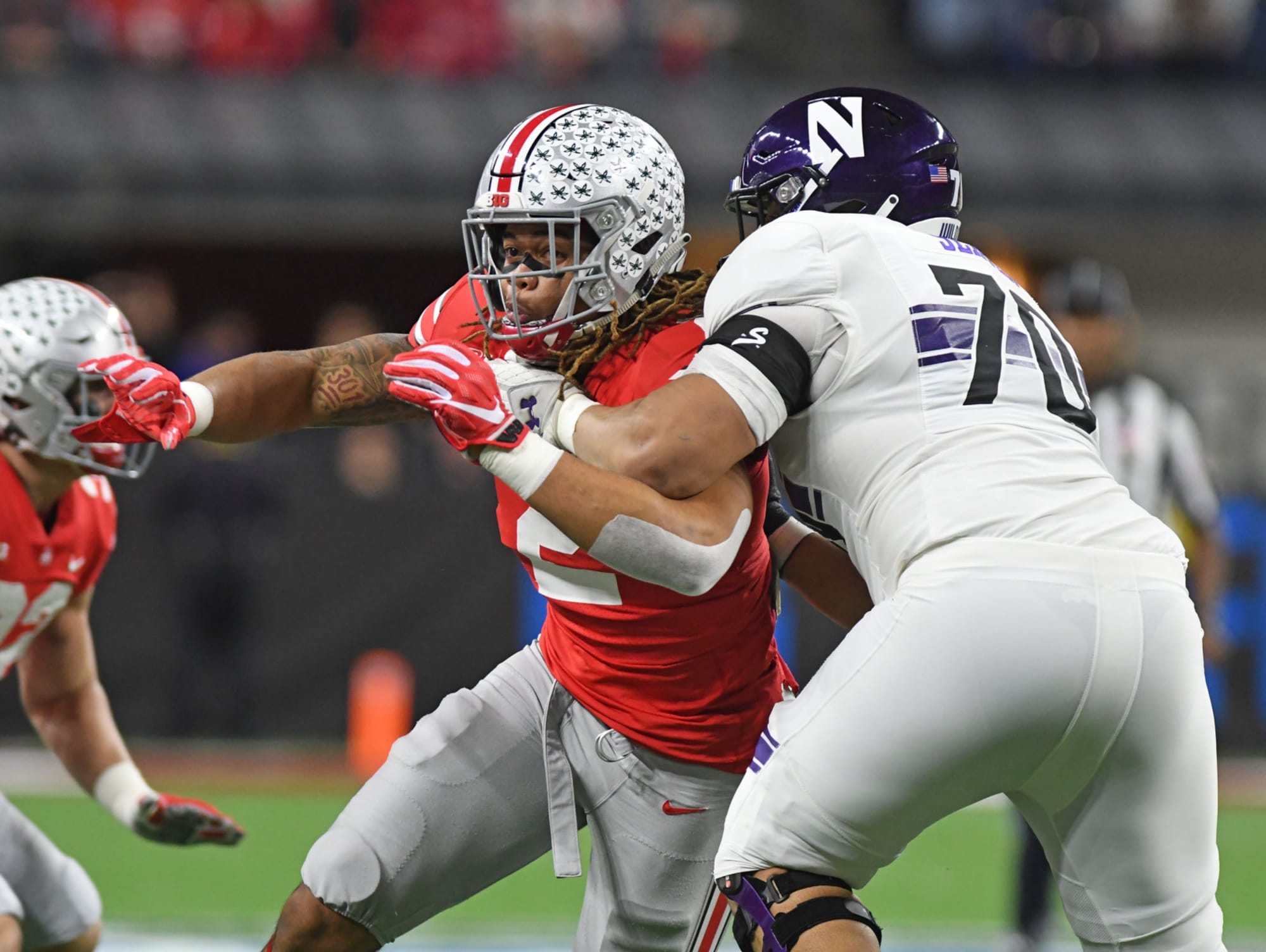
Photo Credit: Thomas J. Russo-USA TODAY Sports
#13 Rashawn Slater, OL (Northwestern)
There are legitimate questions about whether Slater is better at guard or at tackle, but similar with Isaiah Wynn a few years ago the question is more whether he is more valuable as an elite guard or as a good tackle. While he lacks the top-end foot speed to pass protect against the very best speed rushers, especially those who are then able to counter with power, but he uses his hands extremely well to secure blocks as both a pass protector and a run blocker and shows the footwork to create rushing lanes inside as part of a direction blocking scheme.
#14 Jaylen Waddle, WR (Alabama)
Waddle is very, very fast and is going to be a real threat both in terms of stretching the field vertically and also after the catch. He has good hands, though there are some drops through contact, and flashes of route running ability vertically, but there is room for further development on short and intermediate routes and he is going to be more of a big play specialist than somebody who is the foundational piece for an offense. However, if you want a vertical threat then there are few players better.
#15 Alijah Vera-Tucker, OL (USC)
Vera-Tucker is another who is likely to move inside to guard after playing tackle in college, which should allow his foot speed to be a real strength rather than a weakness. He does need to improve the discipline of his hand usage, but this should be helped by playing under less speed pressure and he shows both good functional strength and hand placement to be effective inside with the footwork to create rushing lanes as part of a directional blocking scheme.
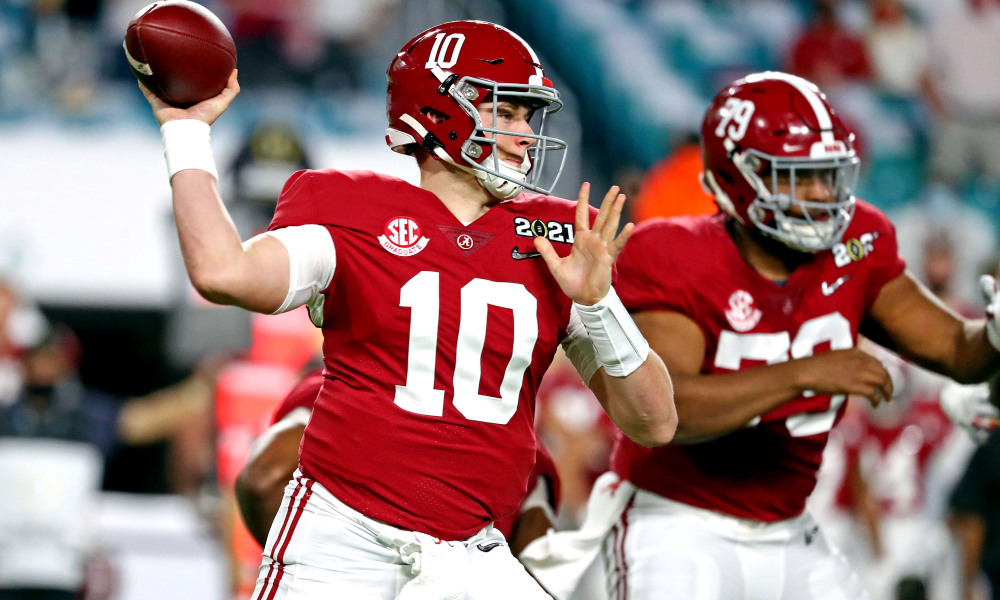
Jan 11, 2021; Miami Gardens, Florida, USA; Alabama Crimson Tide quarterback Mac Jones (10) throws a pass during the first quarter against the Ohio State Buckeyes in the 2021 College Football Playoff National Championship Game. Mandatory Credit: Kim Klement-USA TODAY Sports
#16 Mac Jones, QB (Alabama)
Yes, Mac Jones isn’t likely to become Brady or Brees, but he has a good shot of being a Bridgewater or a Smith, and while that isn’t what teams hope for with a top ten pick it is important to know that both of those players have led teams to the play-offs and in the right system with good surrounding talent then Jones can be a winning quarterback in the NFL, and that is worth a lot. He doesn’t have an elite arm, but he makes good decisions with the ball and is accurate on short and intermediate throws with the ability to push the ball deep at times.
#17 Andre Cisco, S (Syracuse)
Cisco isn’t perfect, he needs to improve technically as a tackler to avoid whiffs and his footwork in man coverage is still quite raw, but he is an excellent athlete with the potential to play a high quality of man coverage, play in the box against the run and patrol the back end as a centerfield safety. He has great ball skills and range and combined them with really exciting anticipation to be a persistent ball hawk on the back end. He might not start week one, but he has as high a ceiling as any safety prospect from recent years.
#18 Jeremiah Owusu-Koramoah, LB (Notre Dame)
The NFL vision of what makes a good safety has shifted from a 250lbs run-stuffing thumper to a more coverage-focused player along the lines of a Luke Kuechly or a Fred Warner. Koramoah doesn’t flashes the upside in zone coverage that those two have, but he has the movement skills to match up with tight ends, running backs and even some receivers in man coverage and has the physicality and tackling technique to be a high-quality run defender as well.
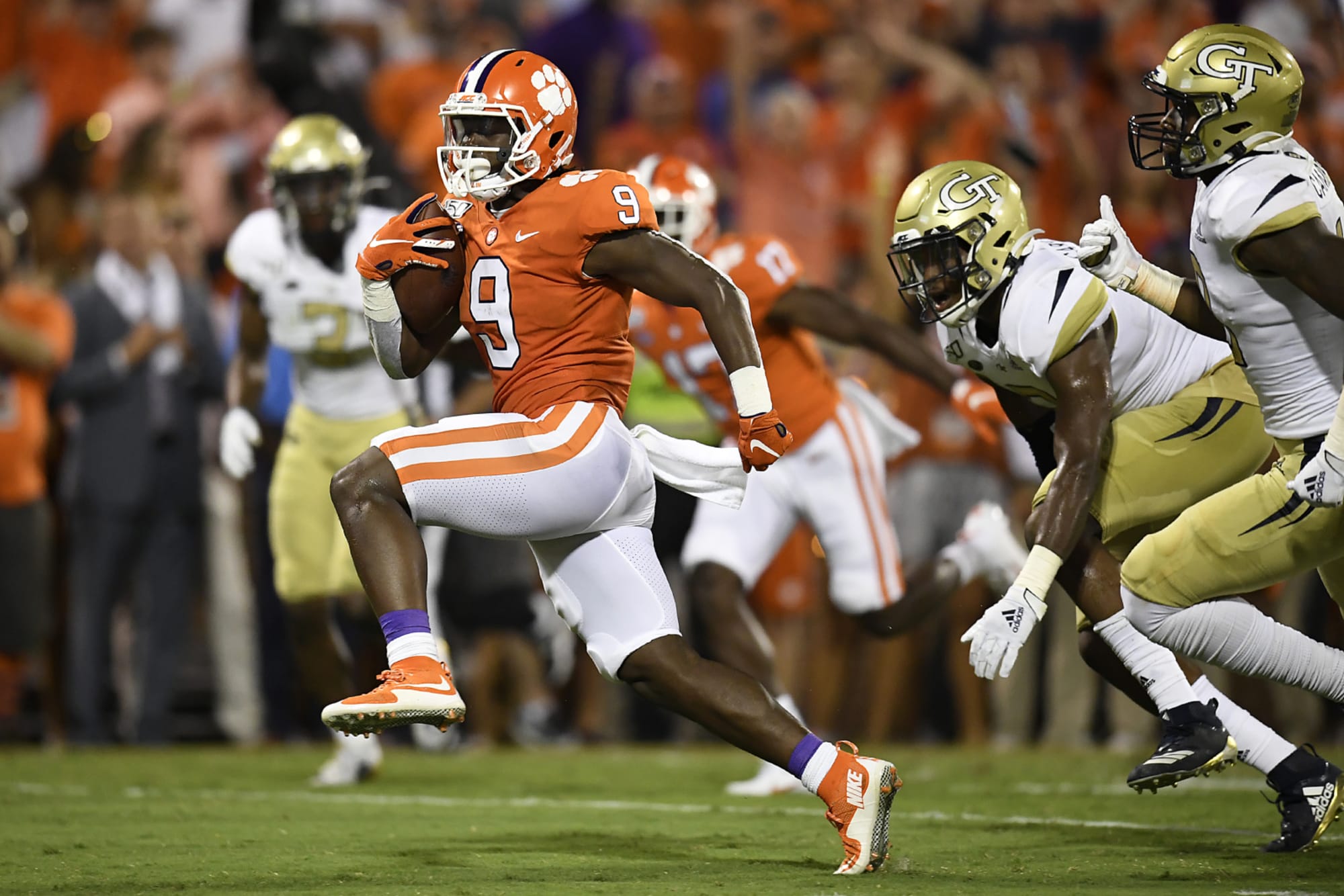
Photo Credit: Mike Comer/Getty Images
#19 Travis Etienne, RB (Clemson)
Etienne is the prototype of what the NFL looks for in running backs, with the ability to run the ball effectively inside and out but is also able to get out in space, run routes and create problems for defenses in how to match up with him. He does occasionally miss rushing lanes when working inside and would ideally play with a little more patience behind the line, but he is a home-run threat on every play, has great contact balance and the quickness and agility to develop further as a route runner.
#20 Tyson Campbell, CB (Georgia)
Tyson Campbell doesn’t excel at the catch point, but other than that he is pretty excellent as a player. He moves extremely fluidly for a man of his size with the ability to mirror against receivers of all sizes in man coverage, and the instincts to impact the game in zone. If he can show that he can turn some of those incompletions into interceptions, then he would rise even higher on the board. Even without that, however, he should become a very good player at the NFL level.
#21 Levi Onwuzurike, DT (Washington)
Onwuzurike is underdeveloped in part due to how he was used in Washington’s scheme, and given that he will be an older rookie this is the cause for some hesitation, but there is also a lot to like with him on tape. He has the quickness to penetrate into gaps and to push the lateral agility of interior blocks while also having surprising power to counter this with an effective bull rush. He does need to play with better pad level and continue to add to his pass rushing repertoire, but he can be a very good interior pass rusher with time.
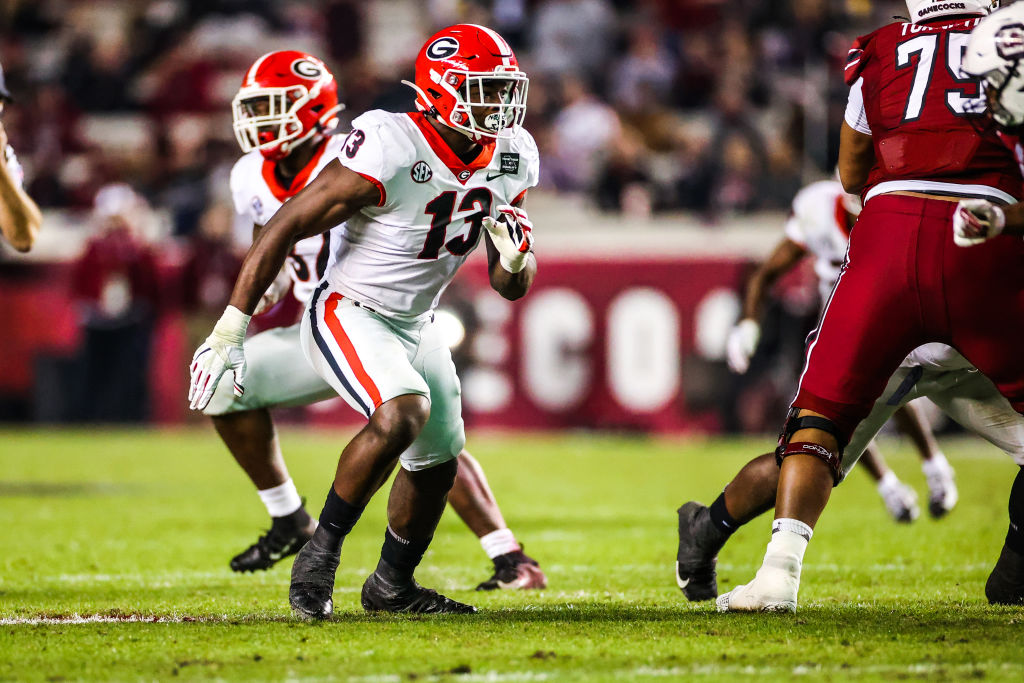
COLUMBIA, SC – NOVEMBER 28: Azeez Ojulari #13 of the Georgia Bulldogs prepares to block against the South Carolina Gamecocks at Williams-Brice Stadium on November 28, 2020 in Columbia, South Carolina. (Photo by Tony Walsh/Collegiate Images/Getty Images)
#22 Azeez Ojulari, EDGE (Georgia)
Ojulari isn’t the flashiest athlete, but his has the quickness to push tackles around the edge, the power to counter that with an effective bull rush and to anchor against the run while also being able to drop into coverage both in man and zone coverage. He doesn’t have the fullest pass rushing repertoire, but he uses his hands well to keep blockers away from his frame with good arm extension and has effective inside counters. He is unlikely to ever be an All-Pro, but he should be a high-quality starter early on in his career.
#23 Christian Darrisaw, OT (Virginia Tech)
Darrisaw is the strange prospect who does almost everything very well but has one real issue on tape. If teams trust that he can continue to improve his hand usage then he should be much higher on the list than this, but right now his arms get all over the place far too often and this leads to issues controlling and sustaining blocks. However, apart from that, he shows really good foot speed, knee bend, mobility and power and combines this with the footwork to create rushing lanes inside. He can be extremely good, he’s just not quite there yet.
#24 Amari Rodgers, WR (Clemson)
Rodgers isn’t the flashiest athlete, but he has enough speed to create separation vertically and really good quickness and agility to create separation underneath on a consistent basis. He has really good hands and is a nightmare after the catch, and while he didn’t run the fullest route tree at Clemson, he really impressed at the Senior Bowl in terms of being able to create separation over a diverse route tree. He probably won’t become the #1 receiver in an offense, but he can be a real weapon, especially from the slot.
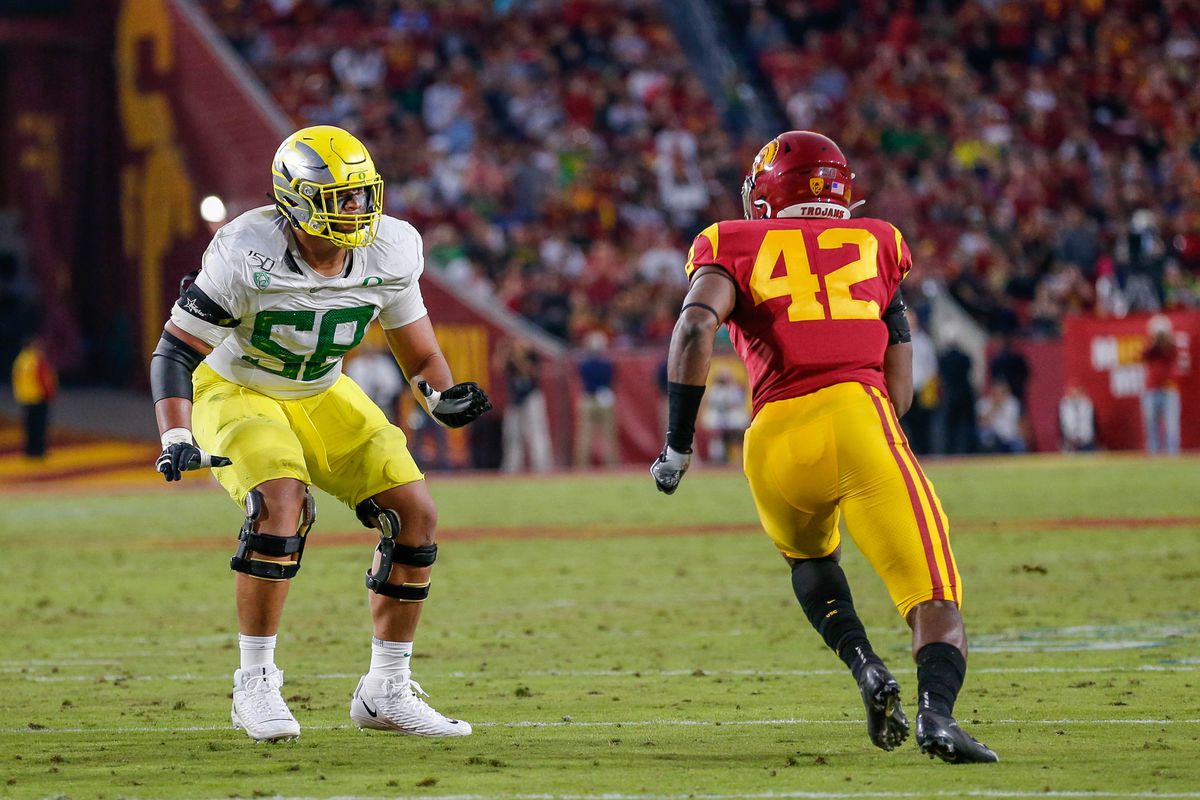
Photo Credit: Jordon Kelly/Icon Sportswire via Getty Images
#25 Penei Sewell, OT (Oregon)
Penei Sewell has absolutely tons of talent, he has the foot speed to cover around the edge, the movement skills to get out on front on screens and the power to move defenders off the line in the run game. However, he currently really struggles with his knee bend that create real issues with balance both in pass protection and as a run blocker. If he can reach his ceiling then he’ll be an All-Pro, but he has quite a lot of work to do before he can get there.
#26 Micah Parsons, LB (Penn State)
Parsons is a player whose value is going to depend massively based on scheme. He is a great run defender with the speed to run sideline-to-sideline or shoot gaps inside as well as good tackling technique and the physicality to take blockers on in the run game. In coverage, he has the speed and agility to follow tight ends and running backs in man coverage but doesn’t make as much impact in zone where he struggles for anticipation at times and lacks proven ball skills. In a scheme that blitzes a lot he will be a key piece but could struggle to make an impact in a scheme that drops seven into zone a lot.
#27 Kelvin Joseph, CB (Kentucky)
The big hit with Joseph is that he hasn’t played a huge amount, but in time he has spent on the field he has been really impressive. He has the movement skills and speed to match-up with receivers in man, the ball skills and anticipation to make an impact in zone, and the length and strength to be effective in press. He needs to be more disciplined with his footwork and continue to improve his read-and-react skills, but his good plays are as good as any corner in this class.
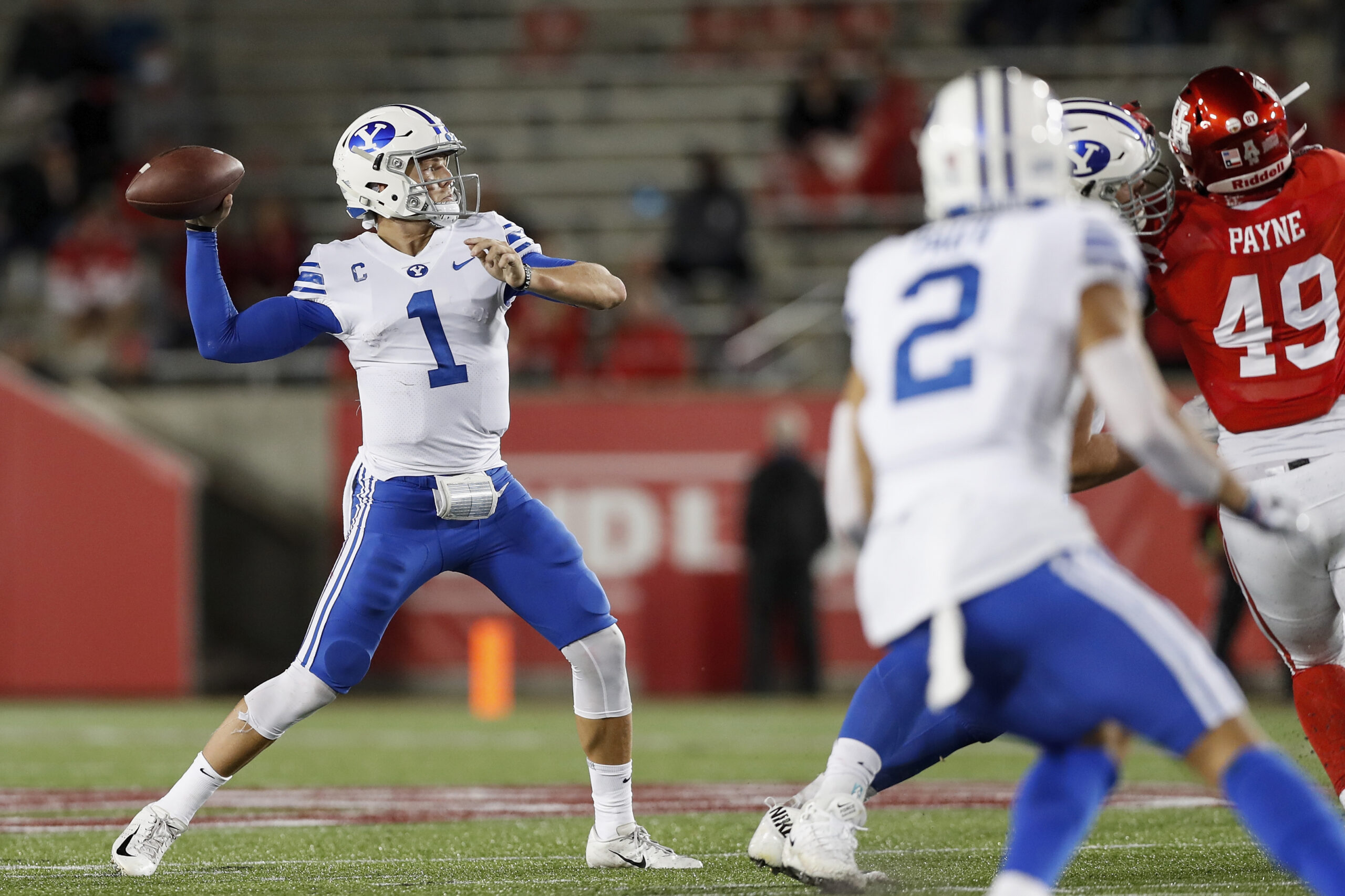
HOUSTON, TEXAS – OCTOBER 16: Zach Wilson #1 of the BYU Cougars throws a pass in the second half against the Houston Cougars at TDECU Stadium on October 16, 2020 in Houston, Texas. (Photo by Tim Warner/Getty Images)
#28 Zach Wilson, QB (BYU)
Wilson does have a lot to like, he has a good arm and shows flashes of being able to work through reads quickly, and if he puts it together then he can be really good, but there are also a few too many areas for concern to have him ranked higher. While he has the arm to make crazy throws, he also struggles for velocity at times when unable to drive through his shoulder leading to some ugly misses. He also makes too many bad decisions with the ball and is far too content to throw up contested passes. He can be good, but all the criticisms of Fields regarding decision making are even more valid for Wilson.
#29 Wyatt Davis, OG (Ohio State)
Davis has slipped a little down draft boards after the end of the season, and he does need to improve his knee bend and be more consistent in his base, but he has the foot speed to cover laterally and the power to move people off the line. He might take a little time to hit his stride in the NFL, but he has the ability to be a high-quality player in whatever scheme he lands in with the upside of being a mauler who can also get out on screens and pass protect one-on-one.
#30 Asante Samuel Jr, CB (Florida State)
Samuel might not fit the prototype that the Panthers look for in a DB, but he is a very balance player who can be really good right away. He has the speed and movement skills to match up with all but the most physical receivers in man coverage and the instincts and ball skills to make an impact in zone as well. He does need to continue to work on his pattern recognition in off zone coverage, but he should be a high-quality player from day one.
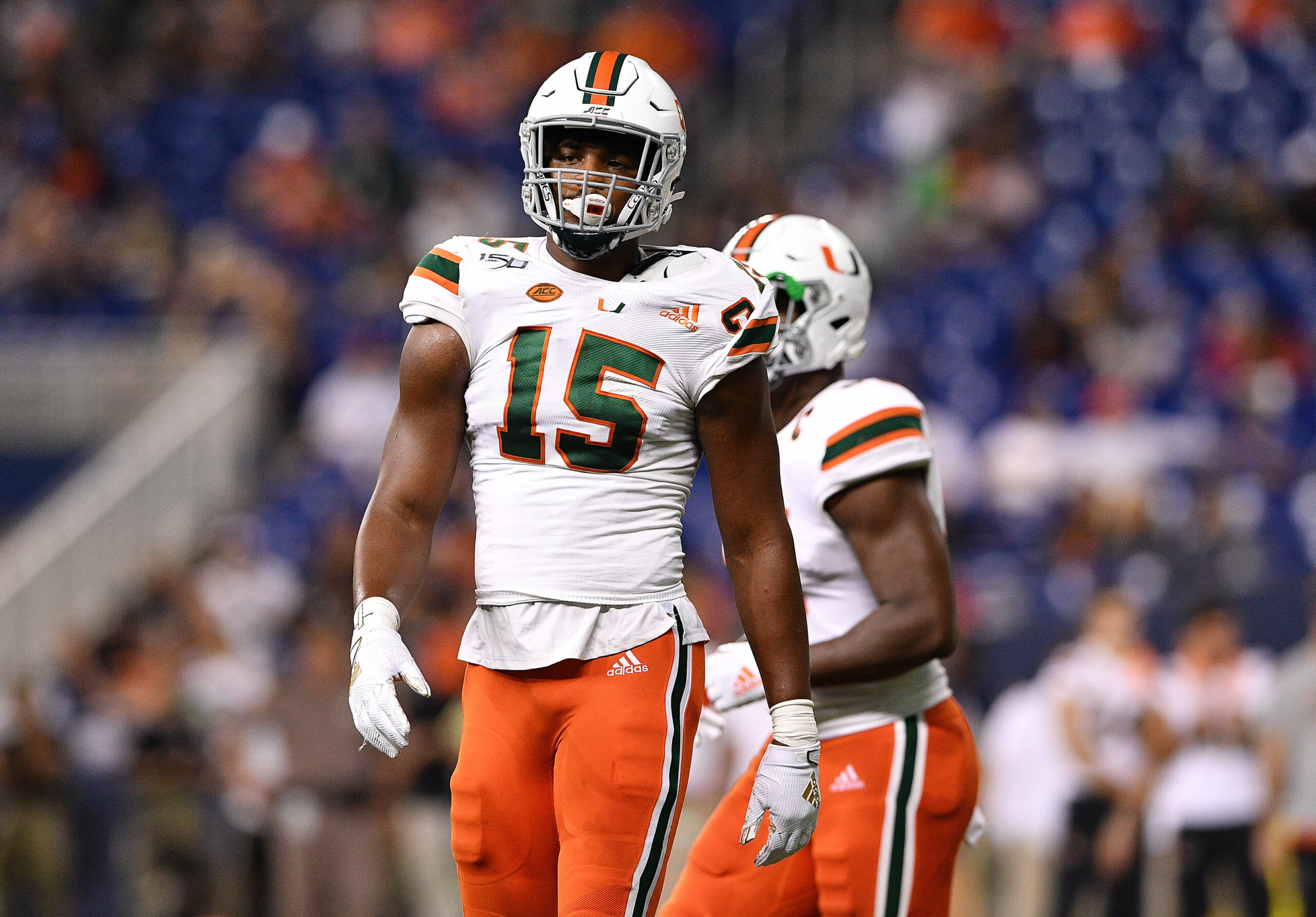
MIAMI, FLORIDA – NOVEMBER 23: Gregory Rousseau #15 of the Miami Hurricanes in action against the FIU Golden Panthers in the first half at Marlins Park on November 23, 2019 in Miami, Florida. (Photo by Mark Brown/Getty Images)
#31 Greg Rousseau, DL (Miami)
Rousseau’s sack production might give the impression of a week one impact player, but he really is still quite a raw player who could take some time to reach his peak in the NFL. What he does have, however, is an awful lot to work with. He has good bend and length to keep blockers off his frame and turn around to corner to the quarterback and the strength to offer an effective bull rush and to penetrate on the interior. If he can continue to improve the consistency of his knee bend and develop more advanced pass rushing moves then he can be great, but that could take a year or two.
#32 Caleb Farley, CB (Virginia Tech)
Farley’s stock might be impacted by his medical flags, but even on tape there is still quite a lot of development between who is he as a player and what he can be. He has the movement skills to match up in man coverage with almost every receiver and the ball skills and flashes of instincts to be an impact player in zone. If he can continue to develop then he can be an elite corner, as good as any in this class, but he is another player who could take a year or two to put everything together.
This isn’t the most top-heavy draft in recent years, but what it lacks in depth of elite prospects it makes up for with the depth of very good prospects. There are some outside of this list who still have a chance to be elite players, and some of the player listed here will inevitably bust, but there are my top prospects for the 2021 NFL Draft.
(Top photo via Bob Donnan-USA TODAY Sports)

